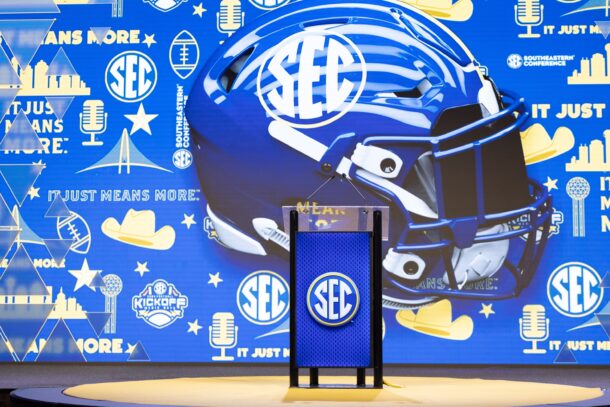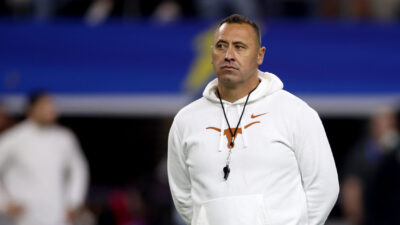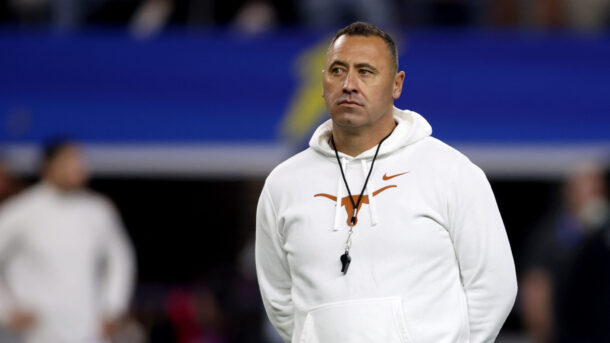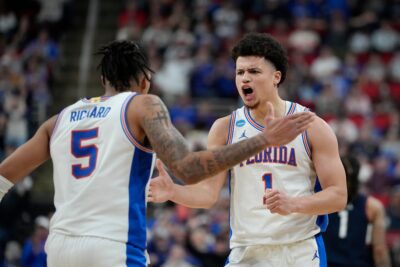Ad Disclosure
There’s been plenty of chatter in recent months about LSU and Florida sparring over the mythical title of “DBU.”
Florida made a hype video, LSU answered back with its own, some players jabbed lightly on social media, and it’s been a topic of offseason conversation ever since.
Meanwhile nobody seems to be coming after the Tigers’ much more vulnerable throne — DLU.
Citing LSU’s three All-Americans, six All-SEC first teamers, and constant stream of NFL draft picks since 2002, ESPN dubbed LSU the No. 1 school in the country for producing defensive linemen last summer.
The pipeline from Baton Rouge to the NFL is staggering.
Since 2002, 22 Tigers defensive linemen have been drafted, including five first-rounders. That’s helped LSU earn its reputation as one of the filthiest defenses in the country, year after year.
So what in the name of Chad Lavalais happened last year?
It may have gone unnoticed by some, because stellar play in the back end kept the Tigers pretty stingy overall, but the boys up front didn’t perform up to the standard that’s been set for them. In fact, they didn’t come close.
Against the run, LSU was hot and cold; it appeared early-season problems had been rectified until Notre Dame ran for 263 yards and three TDs in the Music City Bowl.
But the Tigers’ bigger problem was producing a consistent pass rush. LSU ranked 13th in the conference last year with just 19 sacks on the season.
Some context is needed here.
- Since Nick Saban’s second year at LSU in 2001, the Tigers have averaged 32 sacks per season.
- In seasons when they’ve won 10 games or more, the Tigers have averaged 35.5 sacks.
- The last time an LSU team had fewer than 20 sacks prior to 2014: Saban’s first season, 2000.
- Thirty sacks seems to be the magic number. Since 2000, the Tigers have had more than 30 sacks eight times and fewer than 30 seven times. The difference between those seasons? About 2.5 wins (11.25 vs. 8.7)—which is basically the difference between a first- and second-tier bowl game.
A quick disclaimer: sacks don’t tell the whole story and 30 sacks is a somewhat arbitrary dividing point.
But the fact remains, when LSU gets to opposing quarterbacks, the Tigers win significantly more than when they don’t — and 2014 was one of the worst seasons since the DiNardo days in that regard.
So what are they going to do about it?
Last year’s starters at defensive end are gone, leaving no Tiger on campus who has ever started a college game at the position. And following the summer departures of Maquedius Bain, Travonte Valentine and Trey Lealaimatafao, depth is a question mark across the board.
But let’s not get carried away. Despite what the preceding paragraphs might imply, the cupboard isn’t bare when it comes to talent. Defensive tackles Christian LaCouture and Davon Godchaux are back and formed a solid foundation for the defense’s interior last year. Godchaux took over a starting spot after Mississippi State gashed the Tigers for 302 rushing yards, and in the last nine games, only three LSU opponents topped 150 yards on the ground.
At defensive end, the questions are more pronounced, and it’s here where newcomers may have the most-immediate impact. Juniors Lewis Neal and Tashawn Bower have gained experience as reserves in the past two seasons and appear to be the frontrunners for starting positions.
But keep an eye on Arden Key. The lean 230-pound freshman out of Atlanta has already drawn comparisons to Barkevious Mingo, who showed up in Baton Rouge a little on the skinny side, then left as a first-round draft pick. The Tigers have no plans to redshirt Key, and his presence could be felt early in the season as an edge rusher passing situations.
Fellow freshman Isaiah Washington is also turning heads, and given the experience earned by Deondre Clark and Sione Teuhema as true freshmen last year, depth at defensive end may not be such a concern after all, despite the lack of a returning starter.
The interior situation is similar. Behind Godchaux and LaCouture, Quentin Thomas — who was slowed by biceps injuries in 2014 — is the only tackle with extensive experience. But reserves Frank Herron and Greg Gilmore are former elite prospects and have drawn praise from Les Miles in camp.
And don’t forget the most recognizable newcomer — Ed Orgeron, who’s returning to South Louisiana to coach LSU’s defensive line this year. Coach O’s recruiting prowess is well-known, but he’s also one of the most experienced position coaches in the country; he first coached defensive linemen under Jimmy Johnson at Miami.
If nothing else, Orgeron’s already won over his players.
“Coach O is definitely going to find a way to make it work,” Godchaux told the Baton Rouge Advocate recently. He’s going to find a way. I’m pretty sure this isn’t the first predicament he’s been in where he didn’t have a lot of guys. Let the fans know we’re going to be ready.”
Brent Holloway is a contributing writer for Saturday Down South. He covers Georgia, LSU and Mississippi State.




